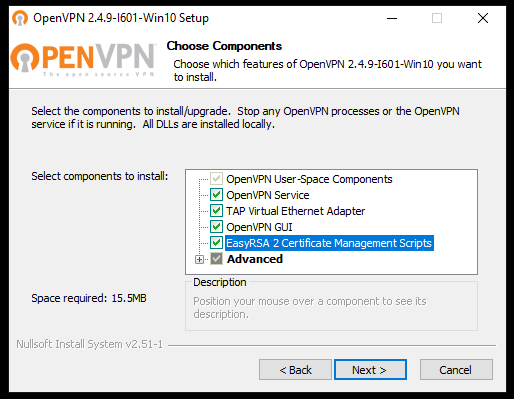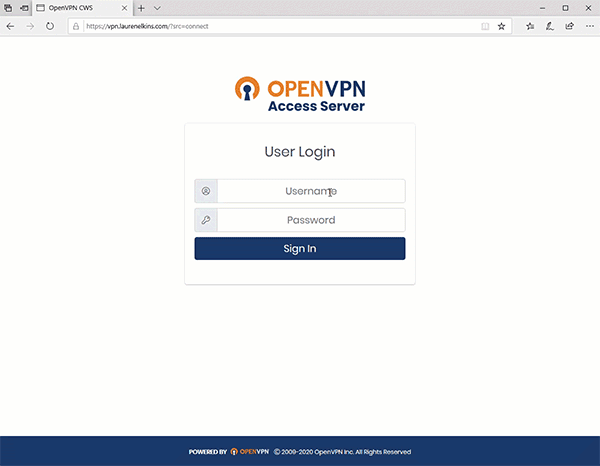

- OPENVPN ACCESS SERVER CONFIG FILE LOCATION HOW TO
- OPENVPN ACCESS SERVER CONFIG FILE LOCATION ARCHIVE
- OPENVPN ACCESS SERVER CONFIG FILE LOCATION ANDROID
Transfer the file dh.pem from the EasyRSA-server\pki folder to the C:\Program Files\OpenVPN\config folder.Copy it from this location to C:\Program Files\OpenVPN\config and open the file in a text editor. The server configuration file will be based upon a file called server.ovpn that is located at C:\Program Files\OpenVPN\sample-config. The client and server EasyRSA windows may be closed by typing Exit in themĪssembling the server configuration file. Part of this file will be incorporated into the client config.

Initialise the environment and setup the folder structure for the client PKI.Ī file called \pki\issued\Client1.crt> will be generated on the server. This will open the EasyRSA 3 Shell for Windows.

For the purpose of this tutorial the folders the folders are on the same computer.įrom within Windows File explorer go to the EasyRSA-client1 directory and double click on EasyRSA-start.bat. I called one EasyRSA-server and the other EasyRSA-client1.
OPENVPN ACCESS SERVER CONFIG FILE LOCATION ARCHIVE
You need to ensure that this port is forwarded to your computer if you are behind a router and any Firewall entries are opened up.Įxtract the EasyRSA archive into two folders.
OPENVPN ACCESS SERVER CONFIG FILE LOCATION ANDROID
The server configuration was tested on Windows computers while the client was tested on both Windows and Android devices. The generation of the configuration files in this HOWTO was done on Windows computers. OpenVPN is available on various platforms. Extract the contents of the archive into a folder. Download the latest release of EasyRSA from.
OPENVPN ACCESS SERVER CONFIG FILE LOCATION HOW TO
In the process this article explains how to create the public key infrastructure (PKI) so that a client can securely communicate with the server. This HOWTO article is a step-by-step guide that explains how to create the server and client OpenVPN configuration files that makes this possible. OpenVPN allows client computers to tunnel into a server over a single UDP or TCP port securely.


 0 kommentar(er)
0 kommentar(er)
